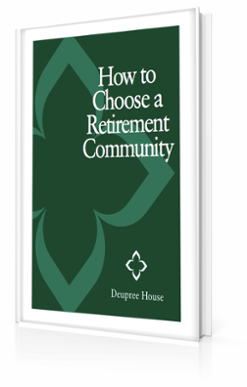How valuable to our descendants — grandchildren, or great-great-grandchilden — would some of our snapshots and family portraits be decades from now? What life lessons you have learned could you pass on to them? Also, how do you tackle the gigantic process of preserving family memories in the digital age?
These days, many people don't create photo albums and scrapbooks. Instead, photos and things we write now live in the electronic ether, or clouds, in our phones and laptops, in an ever-evolving series of cloud-based apps and other digital media.
So how can we transmit our keepsakes and heirlooms, our memoirs, our experiences, our wisdom and details of our lives?
Here are some ways to preserve your family memories.
1. Believe in the power of memories
Our descendants may no longer print out physical copies of photos and archive them in books. But that doesn't mean they don't value your photo albums, or that they don't want to know about the people and events they depict.
Our grandkids someday would love to know the substance of our old letters. How can you preserve those keepsakes?
First, engage them! Your grandkids and great-grandkids care about you. They want to understand you and learn from you. So take the time to reach out to them.
Be careful not to force memory-lane trips on them, especially with small children. Instead, offer them opportunities to look through your albums, or you can read a few letters to them when you see them. You'll plant seeds that might bear fruit long after you're gone.
Share your personal stories from time to time, without waiting for someone to ask you. Often, they don't know what to ask about. When holiday conversations or other circumstances naturally remind you of a past event, a person or place you knew, lower your guard and share what you're thinking about.
2. Back up your data, and back up your backups
Machines fail. Redundant machines, too, will fail. Inevitably, such failures will sometimes occur simultaneously. Assume they will, and plan accordingly.
For example, it's a great idea to keep files on your PC and on an external hard drive. But it's not going to help you do so if you keep both on your desk and one day a pipe bursts over your office and floods both. When you switch computers, be sure to save the photos and important documents from the old one.
Scanning documents and storing them in several places (a primary hard drive or flash drive, plus at least one failsafe drive kept in a separate location, all backed up by "doomsday" storage on a cloud-based app like Carbonite) is a best practice for digital preservation.
3. Do NOT laminate
Many people make the mistake of laminating old letters and documents to preserve them. But this does more to destroy your documents rather than protect them.
The adhesives and plastic eventually will chemically interact with the paper and ink, break them down and destroy them. And there's no way to undo the damage to an already-laminated document.
If you've already done so, no crying over spilled milk. Lesson learned. Don't laminate anything else. Pro tip: Take a photograph of the laminated documents and photos before they deteriorate.
4. Use proper preservation techniques
The best preservation methods for heirlooms vary by substance. A bronze lamp, for example, will have different physical qualities and undergo different degenerative processes than a gold ring, a carved wooden sculpture or an antique mirror.
Work with a reputable conservator to protect your most important items and documents. If you don't have the budget to do so, check out this easy, thorough resource page on FamilySearch that includes sound advice and do-it-yourself methods for preserving items of all kinds.
Here's another pro tip: When you're downsizing in preparation for moving your household, and there are treasured items you wish you could take, DO take them, but in photographic form. Take pictures of beloved items that your children don't want, and you can keep them without never seeing them again. These days, you can even compile them into books you can keep on your coffee table.
5. Consider all the things that could go wrong before choosing where to store
The primary enemies we face in preservation are damage from heat, ultraviolet light, chemical reactions (e.g., rust and other oxidation processes), microbes (bacteria, fungi/yeast and algae), insects/rodents and physical calamities (floods, fires, storms, etc.).
Keep sensitive documents and heirlooms in plastic bags, inside plastic tubs and stored in cool, dark, dry locations — avoid basements, garages and attics, if possible.
If you really want to protect your documents from water and pest damage, put them in sealed plastic bags inside airtight and watertight plastic containers. Mothballs and deterrent sprays might keep insect larvae away, but they also introduce chemical reactants into the ambient air, which can damage your items in and of themselves.
When storing, store on shelves, not on the floor. Upstairs closets are less likely to have pipes running overhead or behind their walls and thus make better options than downstairs closets, especially if you live in an area prone to flooding.
For really important financial documents, passports, wills, etc., consider renting a safe-deposit box at your bank. Offsite, climate-controlled, underground, high-security storage units can be a good bet, too — but they can be very costly over time.
6. Write memoirs for your kids, and their kids
Some future descendants will treasure things you write about your life, such as where you met your spouse, your crazy first job, your career successes. These can help future generations understand where they came from, genetically, and how they inherited some of your quirky behaviors.
Also, don't just write your own memoirs, but record the memories of your older relatives. One woman from Ohio recently went to Tennessee to visit her oldest living relative, the sister of her mother who died when she was young. She recorded an interview of her aging aunt, asking questions about her life, things about her mother she didn't know, and what her deceased grandparents were like. It's something that fills her heart and she can share with siblings and their kids.
A group of residents at Marjorie P. Lee regularly gathers to share some of their memoirs and give encouragement and tips to each other.
Related Blog: Writing memoirs for themselves, each other and posterity
7. Video can be worth a hundred photos
As young parents learn, a baby's mannerisms and appearance can change from month to month, if not more. The way they wrinkle their nose when they show a large grin eventually stops, as their nose develops. And boy, three years later, they'll reminisce fondly about that wrinkled nose. Also, how much more do we learn from watching somebody saying something, as opposed to only seeing their photo while reading something they wrote? Cellphones that record video are a gift that we should make more use of. Just remember: Back it up!
Preserving documents because you're thinking of downsizing out of your home?
Want to learn other aspects of positive aging? We have more answers for you on that front. Click here to download our free guide on the subject.
And if you have questions about living in an ERS community, click on the button below for a guide that answers the most common questions people have about living at one of our campuses.












